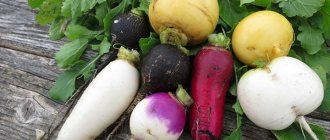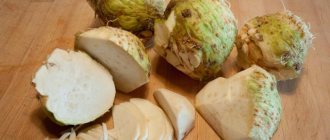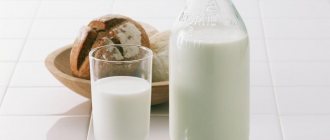Benefit
Beet leaves can be eaten until frost. Which is valuable, considering how many useful substances are contained in the tops. The tops of the vegetable are a source of protein, phosphorus, zinc, magnesium, potassium, manganese, copper; ascorbic acid, vitamin A, B6, fiber.
Useful properties of beet tops:
- Beet leaves are a source of vitamin C. Ascorbic acid is a water-soluble substance, so its supply must be constantly replenished. Vitamin C is involved in the production of collagen, a protein that supports healthy skin, bones, and blood vessels. It is a powerful antioxidant that protects the body from infectious diseases.
- The tops contain large amounts of vitamin K (more than 300% of the daily value in 100 g) . It ensures blood clotting and prevents the destruction of brain neurons. Therefore, it prevents Alzheimer's disease. Together with calcium, it increases bone strength, helping to prevent the onset of osteoporosis.
- Beet tops are rich in vitamin A. It strengthens the immune system, stimulates the production of antibodies and blood cells, and supports healthy vision. Beta-carotene is a powerful antioxidant that fights free radicals in the body. As a result, the risk of cancer and heart disease is reduced. Vitamin A is also necessary for the health of mucous membranes and skin.
- Beet tops contain the entire complex of B . This group of beneficial substances ensures normal metabolism in the body, regulates the activity of the immune, nervous, and cardiovascular systems. Folic acid is involved in brain activity, hematopoiesis processes, and prevents developmental defects in the fetus during pregnancy.
- The green vegetable contains more iron than spinach . The microelement is involved in the process of hematopoiesis, prevents and treats anemia. It is recommended to eat beet tops for frequent dizziness and chronic fatigue.
- The green part of the vegetable is a source of potassium and choline . Potassium regulates the amount of fluid in the body, which is important for maintaining water-salt balance, heart rate, and normal blood pressure. Choline prevents fatty degeneration of liver cells.
- When consuming beet tops, the body receives glycine betaine in sufficient quantities . Betaine lowers the level of homocysteine in the blood, a substance that provokes the formation of blood clots and atherosclerotic plaques inside blood vessels. Thus, beet greens prevent coronary heart disease, stroke, and peripheral vascular pathologies. Betaine also prevents fats from remaining in liver cells and prevents the proliferation of cancer cells.
- Fiber and pectins stimulate intestinal function, prevent the formation of pathogenic flora, and improve the digestion process. Tops are included in a variety of diets, because... it improves metabolism.
- Beet tops contain antihistamines. Greens are included in the diet of allergy sufferers to reduce the intensity of reactions.
- Flavonoids and carotenoids have anticancer and antioxidant properties. Zea-xanthine (one of the most important carotenoids) provides protective light filtering functions and prevents macular changes in the retina.
Beet foliage contains more minerals and vitamins than beets themselves (with the exception of sugar and folic acid). Its regular use helps to improve the health of the body, because... Important processes are activated (digestion, metabolism, cell formation, cardiac activity, etc.).
The almost complete absence of sugars allows you to eat the tops with diabetes. Moreover, the product helps diabetics control their blood sugar levels.
The benefits of beet tops for human health
The well-known beetroot can rightfully be called a universal vegetable that brings benefits to human health.
And the point is not only in the beneficial qualities of a valuable vegetable, a bright burgundy juicy root vegetable, but also in the beautiful healing tops of this plant.
How to use beet tops so that they are as useful as possible, we will talk about this below.
What are beet tops?
Beet foliage is not rough, without hard hair, but with a strong juicy petiole.
Beet leaves appear when lettuce leaves and white cabbage have not yet grown on the site.
Beet greens can easily replace this vegetation and enrich the dietary table with high-quality fortified dishes.
The long blade of young tops has the brightest color and has a great taste.
Plus, even the appearance of the red-green leaves is incredibly appetizing.
Depending on the variety, the foliage is bright green or juicy red, and the petioles and veins are dark reddish in color.
Russian people have known about the benefits of green-burgundy vegetation since ancient times.
It’s not for nothing that among the favorite culinary dishes are delicious, thick, rich borscht on tops or a pie stuffed with beets.
What does beet leaves contain?
If in past times people knew only a little about the healing qualities of beet leaves, but today scientists have studied the chemical composition in detail.
An important point that cannot be ignored is the minimum amount of kilocalories in the product, 28 kcal per 100 grams.
Green mass includes:
- Carbohydrates – 6%.
- Proteins – 1.2%.
- Fat – 0.1%.
Di- and monosaccharides are included. Beet greens are a unique supplier of fiber, minerals and other beneficial substances.
Micro- and macroelements include Ca, Al and Mo, B and K, Na, Mg and Co. In addition, the vegetation contains F, Mn and Fe, Zn and Cu. Beet foliage contains I, S and P.
It is not surprising that the medicinal qualities of green beet leaves and recipes from it are still relevant in our time.
The composition of vitamins in the leaves can be the envy of many pharmaceutical pharmaceutical products.
In addition to carotene and ascorbic acid, there are a large number of vitamins. Areas of beet tops with a bright red, bright purple color contain a large amount of natural antioxidants.
Contraindications
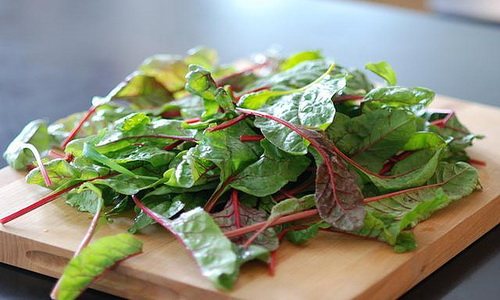
- Kidney diseases. Due to the oxalic acid in the composition. You can include greens in your diet. But in limited quantities and with normal (1.5-2 liters per day) consumption of clean drinking water.
- Stones in the urinary and gall bladder. Oxalic acid aggravates the course of these diseases.
- Taking anticoagulants. The tops already contain a large amount of vitamin K. An increased concentration of the substance will not benefit the body.
- Diarrhea. Pectins have a laxative effect, which is undesirable for diarrhea.
- Gout, pancreatitis. For such diseases, the use of products with oxalic acid is contraindicated.
- Hepatitis, cirrhosis of the liver, acute inflammatory process in the organ. Tops speed up metabolism, which increases the load on the liver.
- Hypotension. Beet leaves reduce blood pressure.
Composition of beet tops
Beet tops are leaves that remain above the soil during the development of the vegetable. They can grow until frost, allowing for multiple harvests. While beets are famous for their mineral content, their tops contain a large amount of vitamins:
- Vitamin C. A water-soluble compound, the supply of which must be constantly replenished. Without this powerful antioxidant, the body will not be able to resist infections. It also takes part in collagen synthesis. This protein supports healthy blood vessels, teeth, bones and skin.
- Vitamin K. Helps normalize the rate of blood clotting. Prevents destruction of brain cells. For this reason, the green part of the vegetable is recommended for elderly people. According to scientists, the product can prevent the development of Alzheimer's disease.
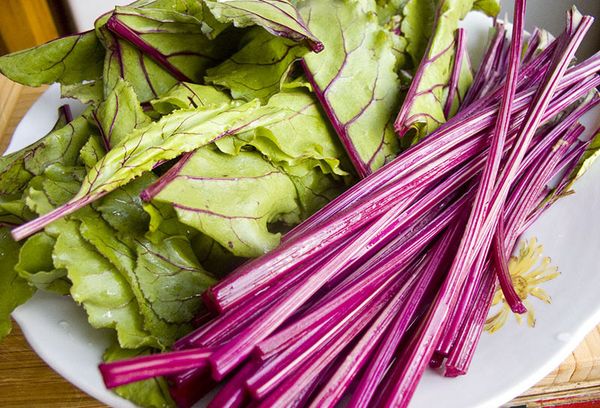
Tip: Green tops can be included in a diet aimed at preventing rickets and osteoporosis. But in this case it should be combined with foods rich in calcium. In combination with vitamin K, this microelement will significantly increase bone strength.
- Vitamin A. Promotes the production of blood cells and antibodies, which leads to strengthened immunity. It has antioxidant properties, due to which it binds and removes free radicals from the body. This reduces the risk of cancer and heart disease. Vitamin A deficiency negatively affects the condition of the skin and mucous membranes. Regular consumption of the green part of the vegetable provides tissue protection from destruction and decreased functionality.
- Vitamins of group B. They are presented in the foliage of the root vegetable in almost complete composition. Substances are responsible for the normal course of metabolic processes throughout the body.
Like beets themselves, their leaves contain many mineral elements. They even surpass spinach in terms of iron levels. Potassium normalizes blood pressure by regulating water balance. Calcium, sodium, manganese and phosphorus trigger chemical reactions, stabilizing the functioning of organs and systems.

In addition, beet tops contain a lot of fiber. It helps cleanse the body of decay and oxidation products and toxins. But there is no fat or cholesterol in it, so consuming the green part of the vegetable has the most positive effect on the condition of the heart and blood vessels.
Composition (vitamins and minerals)
Content of nutrients in 100 g of beet leaves:
| Name | Quantity |
| Vitamin C | 6 mg |
| Vitamin B6 | 0.2 mg |
| Vitamin B1 | 0.05 mg |
| Vitamin B3 | 0.7 mg |
| A nicotinic acid | 0.8 mg |
| Folic acid | 18.6 mg |
| Vitamin B2 | 0.04 mg |
| Vitamin A | 21 mcg |
| Aluminum | 814 mcg |
| Calcium | 15 mg |
| Phosphorus | 34 mg |
| Potassium | 239 mg |
| Sulfur | 15 mg |
| Chlorine | 45 mg |
| Magnesium | 10 mg |
| Iron | 0.5 mg |
| Sodium | 20 mg |
| Zinc | 0.3 mg |
| Iodine | 2 mcg |
| Fluorine | 15 mcg |
| Manganese | 0.22 mg |
| Bor | 100 mcg |
| Copper | 134 mcg |
How to cook

For consumption, choose young leaves. Rinse under running cold water and dry on a towel. Then cut the beet stalks and leaves into the pieces needed to prepare a particular dish. Young tops can be eaten fresh. In pure form or adding to salads.
Large leaves are bitter due to the high concentration of oxalic acid. Therefore, they need to be heat treated. The tops are boiled, stewed, fried, steamed.
From fresh beet leaves prepare:
- salads;
- smoothie;
- vegetable rolls.
Tops are an excellent base for borscht and soups. It is used to make such national dishes as okroshka, cold beetroot soup, and Russian kvass. Beet foliage is also suitable for preparing main courses:
- cabbage rolls (used instead of cabbage);
- pies, rolls, casseroles (as a filling);
- vegetable stew;
- cutlets
Before adding beet leaves to the salad, you need to scald them with boiling water. They will become softer and lose their specific taste.
How to stew tops:
- Cut the washed petioles into pieces. Place in a frying pan greased with vegetable or butter.
- Cook over medium heat for approximately 5 minutes.
- To preserve the color, you can add a little lemon juice.
How to steam:
- Boil water in a saucepan. Install a special insert or metal colander.
- Place the prepared petioles and cover with a lid. Reduce heat.
- Cook for approximately 6-7 minutes.
How to blanch beet leaves:
- To boil water. Add some salt.
- Drop the washed leaves.
- After a minute, remove with a slotted spoon.
To prepare pureed greens, it is recommended to blanch for 2-3 minutes.
Options for preparing beet tops
In cooking, it is customary to use young beet tops; old leaves are too fibrous. It is best to start cooking immediately after harvesting or separating the tops from the root crop. To get not only benefits, but also pleasure from dishes with greens, you should remember a few rules:
- Only fresh leaves are used fresh. Stale or old elements require heat treatment.
- It is recommended to soak very large leaves in cold water before cooking, otherwise they may taste bitter due to the high level of oxalic acid.
- Beet greens can be boiled, steamed, stewed and fried.
- Most often, beet leaves are added to borscht, green cabbage soup and salads. They also work well as a filling for pies and pies, as well as a vegetable dressing for pasta, pizza, scrambled eggs, and stews.

If you want to get the maximum benefit from beet greens, you should make a smoothie from them. You just need to combine the product with vegetables, fruits and herbs, otherwise the taste will be too rich and unusual.
What goes with it?
Beet tops sound good in combination with herbs and vegetables:
- spinach;
- fresh cucumbers;
- celery;
- cabbage;
- radishes;
- onions, garlic, etc.
To highlight the taste of young tops, add walnuts and fresh herbs to the salad. Lemon juice, homemade sour cream, and olive oil are suitable for dressing.
Cooked beet leaves lose their specific taste and smell. Therefore, you can add them to many first and second courses (mushroom and pea soups, pies, bread, pizza, omelettes, cutlets, etc.).
Possible harm to beet tops
All potential harm to beet tops is associated with the high content of oxalic acid in the product. It reacts with mineral elements and forms compounds that are difficult to remove from the body. If you eat leaves too actively, this can cause the formation of sand and stones in the kidneys and gall bladder. People suffering from kidney and gallbladder diseases do not have to completely abandon the product, but they should not get carried away with it either.
To reduce the risks of the negative effects of oxalic acid on the body, you need to monitor your water balance and drink enough water. But for people taking anticoagulants, it is better not to introduce beet leaves into their diet. Otherwise, due to the increased concentration of vitamin K, this can lead to negative consequences in the form of severe blood thinning.

